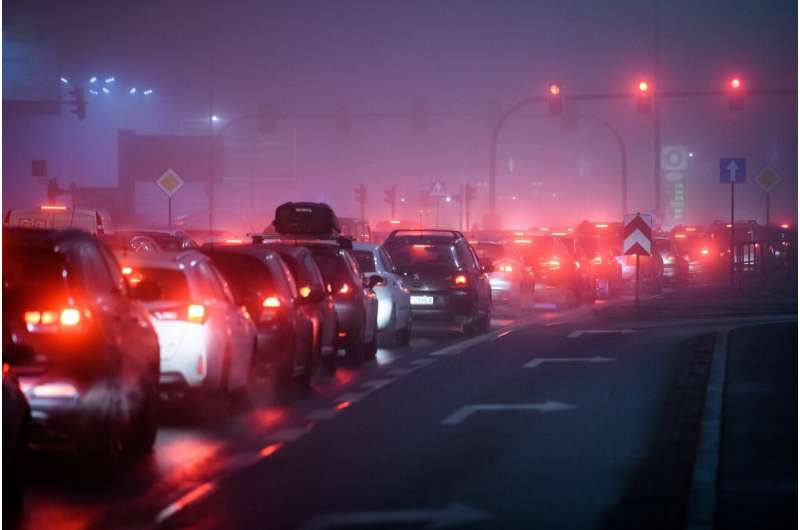Credit: Unsplash/CC0 Public Domain
Coal-fired central heating is widely used in the winter in northeast China, and the consumption of fossil fuels for winter heating could produce a large number of fine particulates, sulfides and nitrogen oxides, which aggravates the air pollution situation in northeast China in winter.
Researchers Li Chunlin, Liu Miao, Hu Yuanman and their collaborators from the Institute of Applied Ecology of the Chinese Academy of Sciences analyzed the distribution characteristics of gaseous pollutants and particulate matter and explored the main factors affecting the variation in pollutants.
The researchers measured the concentration of air pollutants on two main roads in Shenyang by a vehicle-borne air pollutant monitor. And they found that the average concentration of SO2 was similar under different air pollution conditions. SO2 was negatively correlated with other pollutants, while NO2 and particulate matters were positively correlated.
In particular, there was a strong positive correlation between the three types of particles. The environmental factors have a significant impact on air pollution (relative contribution rate > 10%), and temperature is the main factor (relative contribution rate > 20%).
The findings are expected to promote the understanding of the distribution pattern of air pollutants and their main influencing factors in the heating season of northeast China.
This work titled "Spatial distribution characteristics of gaseous pollutants and particulate matter inside a city in the heating season of northeast China" has been published in the journal Sustainable Cities and Society.
More information: Chunlin Li et al. Spatial distribution characteristics of gaseous pollutants and particulate matter inside a city in the heating season of Northeast China, Sustainable Cities and Society (2020). DOI: 10.1016/j.scs.2020.102302
Provided by Chinese Academy of Sciences
























